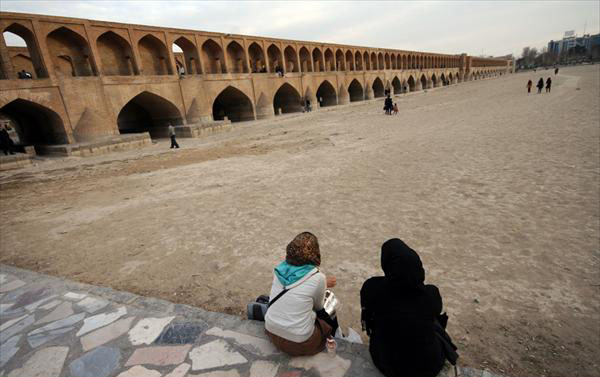While most regions are affected by water shortage, the crisis is now spreading to provinces that were previously unaffected by the devastating phenomenon.
As such, finding new ideas and strategies to resolve the current water problem has become the government’s top priority, said Rahim Meydani, deputy for water and wastewater affairs at the Energy Ministry.
“The primary source of water supply comes from underground resources, but most of these sources have dried up over the past 15 years,” Mehr News Agency quoted Meydani as saying on Monday. “That’s alarming and must be quickly addressed.”
Meanwhile, Javad Meybodi managing director of the office of Water and Wastewater Management Systems at the Energy Ministry said out of the 609 water basins in the country, 343 are now off-limits and cannot be accessed due to critically low levels of groundwater.
Annually, 7 billion cubic meters of groundwater have been used.
“Water shortage has also taken a toll on water quality,” he said.
Currently, 55% of country’s water demand is supplied through groundwater resources and the rest from surface waters. According to official reports agriculture guzzles 90% of Iran’s water, while 7% is allocated to potable water use and 3% to industry.
Last year, the National Water Council approved 15 projects to prevent overuse from underground tables and shut down unauthorized wells, the official said.
The Energy Ministry — which regulates the water sector — allocated 250 billion rials ($8 million) last year to help improve water quality, Meybodi said.
“We’ve increased the amount to 3.25 trillion rials ($100 million) this year.”
It is expected that over the next two years, 50% of ministry’s assets for water management would be assigned to improve water quality and 50% to develop and replenish water sources.
Over the years, the ministry’s funds were largely invested in constructing dams and trying to increase storage capacity. Yet dam building, once considered a sign of progress, dried up rivers and other waterways through poorly conceived and often controversial projects.
The official said the ministry takes monthly samples from 7,033 wells, 1,391 qanats, 837 springs and 1934 pumping stations to monitor the quality and quantity of water.


